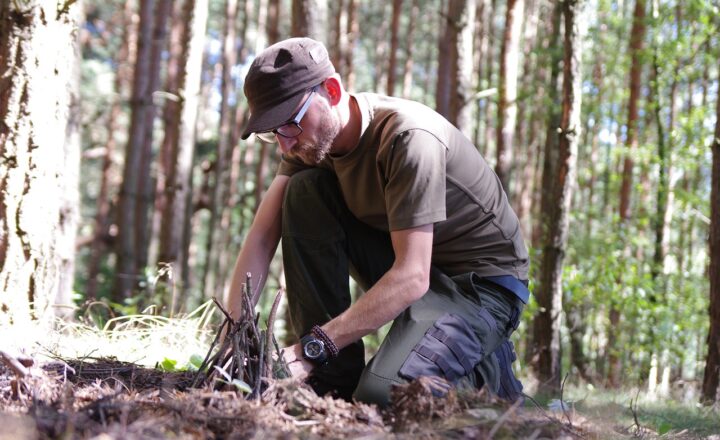The Mysterious World of Desert Plants and Their Unique Adaptations
November 12, 2024

Deserts are often painted as barren landscapes characterized by extreme heat and arid conditions. Yet, beneath this façade lies a vibrant ecosystem teeming with life—most notably, fascinating and resilient desert plants. These remarkable species have developed extraordinary adaptations that not only enable them to survive but also to thrive in some of the harshest environments on Earth.
1. Understanding Desert Ecosystems
Deserts cover about one-third of the Earth’s surface, and they are categorized into four main types: hot deserts, cold deserts, coastal deserts, and semiarid deserts. While they may seem desolate at first glance, they are home to a diverse range of flora and fauna that have creatively adapted to their respective environments.
Desert regions face challenges such as scarce water supply, extreme temperature fluctuations, and nutrient-poor soil. To survive and reproduce, plants have evolved several unique adaptations that allow them to manage these harsh conditions efficiently.
2. Water Conservation: The Key to Survival
One of the most significant adaptations of desert plants is their ability to conserve water. Here are several strategies they employ:
- Waxy Coatings: Many desert plants have thick, waxy cuticles on their leaves that help reduce water loss by minimizing evaporation. This adaptation is vital for plants like agaves and cacti, which thrive in extremely dry environments.
- Modified Leaves: In many cases, desert plants have evolved to develop spines or reduced leaf areas. For instance, cacti have transformed their leaves into spines, which not only deter herbivores but also lessen the surface area from which water can evaporate.
- Deep Root Systems: Desert plants often have extensive root systems that can tap into underground water sources. Some species can reach water tables deep beneath the soil’s surface, while others use shallow roots to capture moisture from the rare rainfall that occurs.
- Water Storage Tissues: Succulent plants, like aloe and various types of cacti, have specialized tissues that store water. This adaptation allows them to survive long periods without rainfall by utilizing their stored moisture during dry spells.
These conservation methods are crucial to their survival in environments where water is the most precious resource.
3. Temperature Resilience: Thriving in Extremes
Desert plants not only face challenges related to water scarcity but also extreme temperatures. The adaptation strategies they employ include:
- Heat-Reflective Surfaces: Some desert plants have reflective surfaces, including shiny or light-colored leaves, which help to minimize heat absorption. This adaptation aids in regulating their temperatures and reducing water loss through transpiration.
- Nocturnal Activity: Certain plants, such as succulents, have adapted by performing photosynthesis at night instead of during the hotter daytime. This process, known as Crassulacean Acid Metabolism (CAM), allows them to open their stomata at night, thus reducing water loss.
- Drought Deciduousness: Some desert plants have the ability to shed their leaves during prolonged droughts, conserving resources while entering a dormant state until conditions improve.
These adaptations allow desert plants to not only survive under extreme conditions but also to flourish, illustrating the resilience of nature.
4. Unique Reproductive Strategies
In addition to their survival adaptations, desert plants also exhibit unique reproductive strategies to ensure species continuity. Here are a few key methods:
- Seed Dormancy: Many desert plants produce seeds that can remain dormant for several years, only germinating when conditions are right, such as after a significant rainfall. This process allows species to survive long periods without significant moisture.
- Pollination Adaptations: Some desert plants have specialized pollination strategies, recruiting various desert-adapted animals to assist in the transfer of pollen. For example, the night-blooming cereus cactus relies on nocturnal pollinators like moths to achieve fertilization.
- Mature Root Systems: During the initial stages of their life, many desert plants invest heavily in root development rather than shoot growth. This ensures that when a brief rain does occur, their root systems can immediately absorb water and support germination and growth.
These reproductive adaptations not only provide resilience to individual species but also contribute to the stability and diversity of desert ecosystems as a whole.
5. Iconic Desert Plants and Their Adaptations
Many specific plants have become symbols of desert landscapes. Here are some noteworthy examples:
- Cacti: Perhaps the most recognizable desert plants, cacti are experts at moisture retention, thanks to their thick, fleshy stems and reduced leaves. Their spines deter herbivores and reduce water loss. The saguaro cactus can store large quantities of water, allowing it to flourish in arid conditions.
- Joshua Tree: This iconic plant, native to the Mojave Desert, showcases a unique growth form with its branching structure. Its drought-resistant adaptation includes long, deep roots that help it access moisture far beneath the soil.
- Creosote Bush: Known for its resilience, the creosote bush produces a resin that helps to protect it from harsh sun and heat. It also has the capability to produce seeds that remain dormant for years.
- Aloe Vera: Renowned both for its health benefits and hardiness, aloe vera can store water in its leaves and has adapted to thrive in dry environments, making it popular in both deserts and gardens.
These remarkable plants not only pique our curiosity but also teach us about resilience and adaptation in extreme conditions.
Conclusion: The Wonders of Desert Flora
The mysterious world of desert plants is a testament to nature’s ingenuity. Their unique adaptations to conserve water, withstand extreme temperatures, and reproduce effectively make them extraordinary survivors. As climate change introduces new challenges to ecosystems, understanding and appreciating desert flora becomes increasingly vital.
The knowledge gleaned from the adaptations of these plants can inspire not only conservation efforts but also innovative practices in agriculture and resource management. By studying desert ecosystems, we can learn valuable lessons about resilience, sustainability, and the intricate balance of life.
These adaptations are a vivid reminder of how life can thrive under even the harshest conditions, making the desert not a place of desolation but rather a treasure trove of biological diversity and resilience.







